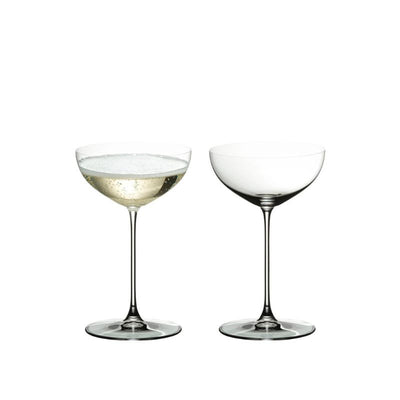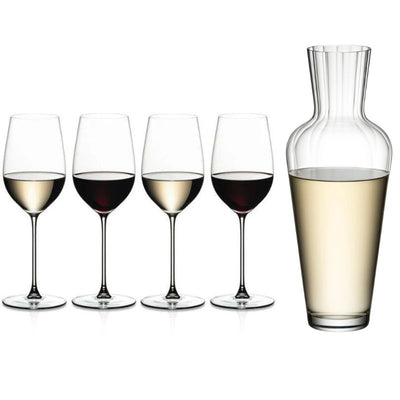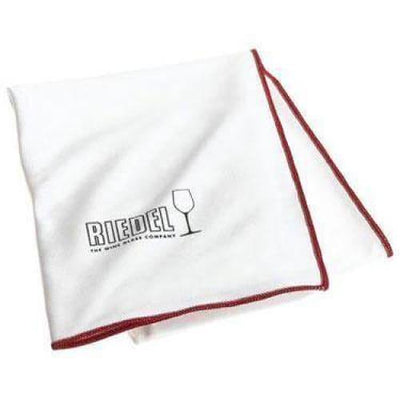Welsh Wine: From Roman Roots to Modern Renaissance

Something popped up on my newsfeed this week that was a complete surprise, and that has, apparently, passed me by for some years.
And that's that Welsh Wine Week 2025 is approaching (30 May to 8 June), now in its fifth year, and the industry behind it has become something quite remarkable.
Many things spring to mind when I think of Wales:
- Tenby beach during the long hot summer of 1976
- School trips to Rhyl and Conwy
- Gareth Edwards
- Ryan Giggs
- Bumping into a musical hero (Stefan Cush of The Men They Couldn't Hang) in the White Horse pub in Llandeilo and sharing a couple of drinks, before he had to go home and babysit, "That's Rock and Roll in South Wales" was his parting shot
- The 2004 FA Cup Final at the Millennium Stadium (Man Utd 3 - 0 Millwall. Hurrah!)
I could go on and on (and frequently do, I hear you say).
But wine isn't one of them. I had a bottle of very fine Penderyn Welsh whisky a few years ago, but Welsh wine (that I remember!) has been few and far between.
So, a little research was in order! And what I discovered was genuinely surprising.
Roman Roots and Ancient Foundations
The roots of Welsh winemaking stretch back nearly 2,000 years to the Roman occupation of Britain, in the 1st century AD. The Romans were renowned for planting vineyards across their empire, and archaeological evidence shows they established vineyards in several parts of Wales.
One of the most significant Roman vineyard sites was located near the town of Caerwent in Monmouthshire. Excavations have uncovered extensive remains of a large Roman villa with evidence of vineyards and a wine press. This is believed to have produced wine for consumption by the local Roman settlers.
Another major Roman vineyard was situated near Caerleon, once one of the largest Roman legionary fortresses in Britain. Traces of grape pips, vine pruning hooks and carved vine motifs suggest there was large-scale wine production here too.
After the Romans departed in the 5th century AD, viticulture and winemaking virtually died out across Wales, and most of Britain, for many centuries. However, pockets of vine growing persisted on a small scale at religious houses like monasteries, abbeys and churches, where monks made simple monastery wines.
Medieval Challenges and the Little Ice Age
The little viticulture that may have existed in medieval Wales declined due to various factors, including climatic changes such as the Little Ice Age. From roughly the 14th to the 19th centuries, Britain and the rest of the North Atlantic region were locked in this period when global temperatures dropped by 0.5°C, making grape growing less viable in the British Isles.
For centuries, Welsh wine production remained dormant, overshadowed by more suitable, more southern wine-producing regions in Europe.
Tudor Revival and Early Commercial Attempts
Winemaking began to re-emerge in the 16th century following the dissolution of the monasteries by Henry VIII. Many monastic lands with existing vineyards were sold off to wealthy Tudor gentry who dabbled in winemaking.
One of the most prominent of these was Sir Evan ap Res in the Vale of Glamorgan, who acquired the vineyards previously owned by the Cistercians of Penrhys monastery. His estate produced red and white wines described as being of "excellent quality."
The UK's first commercial vineyard was planted by the Marquess of Bute, at Castell Coch on the outskirts of Cardiff, in 1875. It had mixed success, averaging about 3,000 bottles a year, and was unlikely to have broken even. It finally closed during World War One.
The Modern Renaissance: Numbers That Tell a Remarkable Story
But now the transformation is extraordinary. Wales has experienced explosive growth in its wine industry that puts it firmly on the global wine map:
Vineyard Expansion:
- Around 50 vineyards now operate across Wales (up from 22 in 2015)
- 70.3 hectares under vine as part of the broader UK wine industry
- Spanning from Saint Hilary in the Vale of Glamorgan, just 5 miles north of the Bristol Channel, to Red Wharf Bay, Anglesey in the North
- Many award-winning producers with burgeoning international reputations
Economic Impact:
- The drinks industry makes a significant contribution to the Welsh economy with a turnover in excess of £800 million
- Welsh retail sales value of over £950 million
- Employs 12,000 people across the sector
Tourism and Revenue Projections:
- Welsh wine experts predict that wine sales and revenue from wine tasting events, vineyard tours, and overnight experiences will bring in £14.4 million by 2035
- The tourism impact on the Welsh economy, partnered with Welsh wine's growth, is predicted to contribute a further £75.9 million by 2035
These aren't just projections - they're targets backed by government support and industry momentum.
The Perfect Storm: Climate Change as an Enabler
Welsh wine is made from grapes grown close to the limit for viticulture. All vineyards are positioned at above 49.9 degrees North, which means exceptionally long daylight hours during the growing season.
The climate is temperate, with few summer days above 30°C and a high diurnal temperature range (the difference between daily maximum and minimum temperatures). The northerly latitude creates a long growing season, and those extended daylight hours are key to developing strong aromatic flavours, while moderate temperatures lead to crisp acidity.
But here's the fascinating part: climate change is having a profound positive effect on Welsh wine production.
The ideal latitude for red wines has traditionally been cited as 50 degrees north and 50 degrees south of the equator. Due to global warming, that band is expanding 15km (9.3 miles) both north and south every year. Today, the optimal range is between 52 and 53 degrees each way.
As far as Wales is concerned, that's Fishguard in the south and Anglesey, at 53.2 degrees, in the north.

Wales is in a sweet spot at the moment and is becoming one of the prime places to grow wine globally. However, if climate change continues as projected, in 40-50 years that same sweet spot will have moved on to Scotland and Scandinavia.
Grape Varieties: Adapting to the Welsh Terroir
To battle the harsh and unpredictable climate, specific grape varieties have been selected to withstand fungal disease, rot, and frost.
Popular Red Varieties:
- Pinot Noir (and Pinot Noir Précoce - a mutation ripening two weeks earlier)
- Rondo
- Regent
- Triomphe d'Alsace
Popular White Varieties:
- Seyval Blanc
- Chardonnay
- Bacchus
- Phoenix
- Madeleine Angevine
- Solaris
- Siegerrebe
- Müller Thurgau
- Albariño
Solaris is particularly common across Wales due to its resilience. It produces aromatic wines with hints of gooseberry, elderflower, and citrus fruits, complemented by good acidity and freshness. It's one of the few I remember drinking, and those who enjoy a good French Sauvignon Blanc would love this zingy and fresh variety.
Award-Winning Excellence: Welsh Wine on the World Stage
Many Welsh vineyards have burgeoning international reputations that would surprise most people.
Ancre Hill Estates in Monmouth stands as the crown jewel of Welsh winemaking:
- Producing award-winning Chardonnay, Albariño, and Pinot Noir
- Even selling Welsh wine to a wholesaler in Bordeaux - let that sink in!
- Using full biodynamic practices since 2011, achieving DEMETER certification in 2014
- Tripled in size in just over 10 years
- Their 2008 Sparkling White was voted the best sparkling wine in the world in 2012 at the Bollicine del Mondo International Competition in Italy
- Currently operating two sites totalling approximately 10 hectares
Other notable achievements include:
- Ancre Hill's Sparkling Rosé 2009 winning gold at the Welsh Wine Awards
- Multiple silver and bronze medals from prestigious international competitions
- Recognition from Matthew Jukes praising their Blanc de Noirs as "not only a decent Welsh drop but also a wildly delicious Pinot Noir"
Welsh Wine Protection Status: Welsh wine has achieved Protected Designation of Origin (PDO) status in both the EU and UK, limited to wine produced in Wales from grapes grown in Wales, conforming to strict quality standards.
The Tourism Revolution
The industry is playing an increasing role in the visitor economy, with many vineyards becoming popular tourist destinations. Welsh Wine Week 2025 will showcase:
- Vineyard tours and tastings
- Meet the producer sessions
- Special promotions and celebrations
- Educational events about Welsh winemaking
The week-long event is organized by the Food & Drink Wales Drinks Cluster, part of the Welsh Government's clustering initiative, working in partnership with drinks producers and vineyards to promote world-class products.
Pricing and Market Position
At £20-£30 a bottle, Welsh wine isn't cheap, and while production runs remain relatively small, this is unlikely to change soon. However, this premium positioning reflects the boutique nature and exceptional quality of Welsh wines.
The focus is on quality over quantity, with Wales establishing itself as an innovative producer of high-quality wines suited to cooler climates. This strategy mirrors successful premium wine regions worldwide that have built reputations on excellence rather than volume.
Government Support and Industry Confidence
The confidence in British (including Welsh) wine is at an all-time high, with the UK Government pledging new funding for the wine sector in 2024. This includes the Future Winemakers' Scheme (FWS) focusing on education, training, and upskilling opportunities.
Viticulture is now Britain's fastest-growing agricultural sector, with employment expected to grow by 50% by 2025.
Expert Recognition: Oz Clarke's Vision
I'll finish with an excerpt from Oz Clarke's piece when addressing Welsh winemakers in February 2024:
"The most enthralling wines, the most alluring, and definitely the most refreshing, are generally made at the limit of a grape variety's ability to ripen. That would describe most Welsh vineyards today.
But being at the limit affects different grape varieties in different ways, and each grape variety should be celebrated for what it can offer, and never apologised for.
Let's consider Burgundy for a moment. Over the centuries Pinot Noir and Chardonnay have gradually been decided on as the most suitable grapes to grow. But don't try complimenting a Burgundian producer on his Pinot Noir or Chardonnay flavours. "I make Volnay", or "I make Meursault" will be their sniffy retort. Pinot Noir or Chardonnay have merely proved themselves over time as the most suitable vehicles to express the character of the precise patch of vineyard land.
It's early days for Wales, but this is where your Welshness lies. Some of you can ripen the Pinots, some of you Chardonnay, one brave soul has succeeded with Cabernet Franc, others of you are using Rondo and Regent, Solaris, Phoenix and Orion.
Things will change as the climate changes, but right now these are the grapes that will help you express your particular piece of land, your particular vision of flavour, your Welshness".
A Toast to Welsh Excellence
So, as Welsh Wine Week 2025 approaches (30 May to 8 June), it's time to pay attention. This isn't just about supporting local industry - this is about recognizing that Wales has become a serious wine-producing region that deserves respect on the global stage.

From Roman vineyards to modern biodynamic excellence, from the Marquess of Bute's experimental 3,000 bottles to Ancre Hill's world-beating sparkling wines, Welsh wine has travelled an extraordinary journey.
With 50 vineyards, protected designation status, government backing, and wines that beat international competition, Wales isn't just participating in the global wine conversation - it's leading parts of it.
Whether you're tasting a crisp Solaris that rivals Sancerre, a complex Pinot Noir that holds its own against Burgundy, or a sparkling wine that beat Champagne in international competition, you're experiencing the fruits of a 2,000-year journey that has culminated in this remarkable modern renaissance.
'Iechyd Da' to you all.











Leave a comment